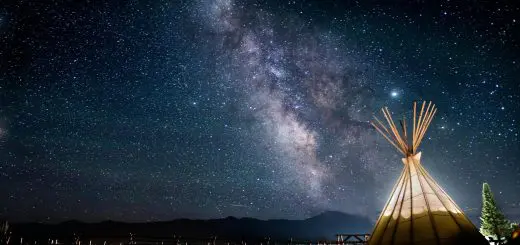How Long Does Mardi Gras Last? A Quick Guide

Looking for more amazing products? Check out our online store and explore our collection here! Happy shopping!
Before diving in, please note: This post is for informational purposes only. If you’d like to know more about how we approach topics, feel free to check out our friendly Disclaimer Page.
Hey there, amazing readers! 
We’re committed to delivering quality posts, and your support (even just sticking around despite the ads) means everything to us. So, bear with us, and thanks for helping us keep the good vibes rolling. Now, on to the fun stuff!
TRANSLATE BUTTON AT THE END OF THE ARTICLE
A Quick Overview
Mardi Gras, a phrase that translates to "Fat Tuesday" in French, is a vibrant celebration marking the final day of feasting before Lent, a solemn season of fasting in the Christian calendar.
This festival is known for its colorful parades, lively music, and mouthwatering food.
But just how long does this jubilant season last?
In this guide, we’ll dive deep into the duration and significance of Mardi Gras, exploring its historical roots, local variations, and the many ways people celebrate this festive time.
Whether you’re planning your first Mardi Gras experience or looking to deepen your appreciation of this lively tradition, this article is here to help!
Understanding the Meaning of Mardi Gras Celebrations
Mardi Gras is more than just a day; it’s a season filled with excitement and cultural significance.
At its core, this festival represents a time of indulgence and revelry before the period of Lent, which lasts 40 days and is observed by many Christians.
The celebrations remind us of the joy of life, gathering with friends and family, and letting loose before a time of reflection and restraint.
Traditionally, people would enjoy rich foods, lively music, and colorful festivities.
The idea was to use up ingredients like butter, sugar, eggs, and cream before Lent began, leading to the creation of delicious dishes like King Cake and beignets.
The festivities represent a culmination of community and social connections.
Mardi Gras also emphasizes themes of freedom and expression.
People don costumes and masks, allowing them to embody different personas and experience a sense of liberation from the everyday grind.
It’s a time when social norms can be pushed aside, and everyone can participate in the fun.
In addition to its Christian roots, Mardi Gras has also absorbed influences from other cultures, particularly African, Spanish, and French traditions, creating a rich tapestry of celebration.
The result?
A festival that is both unique and universally appealing!
The Historical Background of Mardi Gras Festivities
The origins of Mardi Gras date back centuries, with roots tracing back to ancient European pagan spring and fertility rites.
As Christianity spread, these vibrant celebrations were adapted and incorporated into pre-Lenten festivities.
In the early 1700s, French settlers brought Mardi Gras to North America, particularly to New Orleans, where the festival evolved into a massive cultural phenomenon.
The first recorded American Mardi Gras celebration happened in 1837, and since then, it has become synonymous with the city.
New Orleans stands as the epicenter of Mardi Gras celebrations in the United States, boasting parades, masquerade balls, and street parties.
These events attract millions of visitors each year, eager to join in the revelry.
The festival’s rich history is reflected in its traditions.
For example, the iconic King Cake has its roots in the Feast of the Epiphany, with its circular shape symbolizing the circle of life.
Each cake contains a small figurine, and the person who finds it is responsible for hosting the next celebration.
Understanding this historical context enriches the experience of Mardi Gras.
It’s not just a party; it’s a vibrant celebration with deep cultural significance.
Key Dates: When Does Mardi Gras Start and End?
Mardi Gras does not have a fixed date; instead, it varies each year based on the Christian calendar.
The celebrations typically kick off on Twelfth Night (January 6), which marks the end of the Christmas season.
From then until Fat Tuesday (the day before Ash Wednesday), festivities ramp up, culminating in a grand finale.
Fat Tuesday is the day that most people associate with Mardi Gras.
It can fall anywhere from February 3 to March 9.
For example, in 2023, Fat Tuesday fell on February 21, while in 2024, it will be on February 13.
The actual length of Mardi Gras celebrations can vary significantly based on the location.
Some places, like New Orleans, have parades and events for weeks leading up to Fat Tuesday, while others might only celebrate on the final day.
If you’re looking to join in the fun, mark your calendar for the weeks leading up to Fat Tuesday—there’s usually plenty happening, and the atmosphere builds as the date approaches!
The Significance of Fat Tuesday in Mardi Gras Season
Fat Tuesday is the pinnacle of the Mardi Gras season.
It’s the last chance to indulge before Lent begins, making it a day filled with rich foods, music, and, of course, revelry.
On this day, people often gather for feasts, enjoying traditional dishes that they might give up for Lent.
Many cities host grand parades on Fat Tuesday, featuring floats, marching bands, and colorful costumes.
These parades showcase the creativity and spirit of the community, with participants tossing beads, trinkets, and treats to the enthusiastic crowds.
For many, Fat Tuesday is also a time for personal reflection.
It’s a moment to celebrate life, community, and the joy of connection.
Whether you’re dancing in the streets or indulging in a slice of King Cake, the day invites you to embrace the moment.
Fat Tuesday is a celebration of excess, but it also serves as a reminder to appreciate the simpler things in life.
After the festivities, many will transition to a period of introspection and mindfulness during Lent.
Local Variations: Mardi Gras Around the World
While New Orleans may be the most famous location for Mardi Gras, similar celebrations occur across the globe, each with its own unique flair.
Rio de Janeiro, Brazil: Known for its samba parades and street parties, Rio’s Carnival is a dazzling display of music, dance, and colorful costumes.
Venice, Italy: Venetian Carnival is renowned for its elaborate masks and elegant balls, where participants don stunning costumes and explore the city’s romantic canals.
Nice, France: The Carnival of Nice features flower battles and elaborate floats, creating a beautiful spectacle along the French Riviera.
Quebec City, Canada: The Winter Carnival in Quebec boasts ice sculptures, parades, and outdoor activities, all set against a stunning snowy backdrop.
These celebrations, while culturally distinct, share the same core theme: a jubilant farewell to indulgence before a period of reflection.
Exploring these variations can inspire your own Mardi Gras celebration, allowing you to incorporate elements from around the world into your festivities!
The Role of Parades in Mardi Gras Celebrations
Parades are the heartbeat of Mardi Gras celebrations.
They bring communities together, allowing participants and spectators to join in the revelry.
Each parade has its unique theme, float designs, and marching groups, creating an electric atmosphere.
In New Orleans, parades often feature elaborate floats that are hand-crafted and beautifully decorated.
The floats are typically part of social organizations known as "krewes," each with its own traditions and rituals.
These krewes take their roles seriously, often spending months preparing for the festivities.
Attending a Mardi Gras parade is a sensory experience.
You’ll hear lively music, see vibrant costumes, and smell delicious food from stalls lining the route.
The excitement in the air is contagious, making it a memorable event for all ages.
Many parades also feature a "throw" tradition, where participants toss beads, coins, and other trinkets into the crowd.
It’s a fun way to engage everyone, and many people come prepared with bags to collect these treasures.
If you find yourself at a Mardi Gras parade, be sure to arrive early for a good spot and soak in the incredible atmosphere.
Whether you’re part of the parade or cheering from the sidelines, the sense of community and joy is palpable.
Delicious Foods to Enjoy During Mardi Gras Season
Food plays a central role in Mardi Gras celebrations, and there are several traditional dishes to indulge in.
Here are a few must-try items:
King Cake: A colorful pastry adorned with icing and sugar, it often contains a hidden figurine.
The person who finds it is expected to host the next King Cake party.
Beignets: These delightful French doughnuts are fluffy, powdered with sugar, and best enjoyed with a cup of coffee.
Jambalaya: A hearty dish made with rice, meat, and vegetables, it’s a flavorful staple during the festival.
Gumbo: A savory stew that reflects the rich culinary heritage of Louisiana, gumbo is often made with seafood or meat and served over rice.
Crawfish Etouffee: A delicious dish featuring crawfish in a rich roux-based sauce, often served with rice.
These foods aren’t just meals; they’re part of the communal experience that brings people together.
Sharing a meal with family and friends is one of the most cherished aspects of Mardi Gras.
As you explore the culinary delights of Mardi Gras, don’t hesitate to try something new!
Food is a joy, and the festival’s spirit invites exploration and indulgence.
Colorful Costumes and Masks: A Mardi Gras Tradition
One of the most striking aspects of Mardi Gras is the colorful costumes and masks.
These costumes allow people to express their creativity and individuality while also connecting to the festival’s rich history.
Traditionally, masks were worn to conceal one’s identity, allowing participants to engage freely in the festivities.
Today, they are often lavishly decorated, reflecting the bold and vibrant spirit of Mardi Gras.
Costumes can range from elegant gowns to whimsical outfits, each telling its own story.
Many people spend months crafting their costumes, showcasing their artistic talents.
Participating in a costume parade or ball is an exhilarating experience.
You’ll see an array of styles, from classic to contemporary, and everyone is encouraged to join in the fun.
Don’t be shy about dressing up!
The more creative, the better.
It’s all about expressing who you are and enjoying the lively atmosphere.
Family-Friendly Events During Mardi Gras Festivities
Mardi Gras isn’t just for adults; there are plenty of family-friendly events to enjoy.
Many communities host activities designed specifically for children, ensuring everyone can partake in the fun.
Children’s Parades: These smaller parades feature kid-friendly floats and costumes, allowing younger participants to experience the joy of Mardi Gras in a safe environment.
Crafts and Activities: Many festivals offer arts and crafts stations where kids can make masks, decorate King Cakes, or create their own Mardi Gras beads.
Live Entertainment: Family-oriented concerts and performances often take place, featuring kid-friendly music and entertainment that everyone can enjoy.
Food Festivals: Many events include special areas for kids to sample delicious foods, making it a great opportunity to introduce them to the flavors of Mardi Gras.
These events foster a sense of community and create cherished memories for families.
Mardi Gras is about togetherness, and including children in the celebrations helps pass down traditions to future generations.
How to Celebrate Mardi Gras Safely and Responsibly
While Mardi Gras is a time of fun and celebration, it’s essential to prioritize safety and responsibility.
With large crowds and lively events, here are some tips to keep the celebrations enjoyable for everyone:
Plan Ahead: Know the schedule of events and parades, and arrive early to secure a good spot.
Stay Hydrated: With the excitement of the festivities, it’s easy to forget to drink water.
Keep hydrated, especially if you’re indulging in rich foods and beverages.
Be Mindful of Your Surroundings: Large crowds can be overwhelming.
Keep an eye on your belongings and be aware of your surroundings to ensure a safe experience.
Designate a Meeting Spot: If you’re attending with a group, establish a meeting point in case anyone gets separated.
Respect Local Laws: Each city has its regulations regarding alcohol consumption and public behavior.
Familiarize yourself with these rules to avoid any issues.
By taking these precautions, you can enjoy Mardi Gras to the fullest while ensuring the safety and comfort of yourself and those around you.
Celebrating responsibly means everyone can share in the joy of this incredible festival.
Tips for Planning Your Own Mardi Gras Celebration
If you’re inspired to bring the spirit of Mardi Gras to your own home, here are some tips to plan your celebration:
Send Invites: Create festive invitations that set the tone for your event.
Use colorful designs and maybe even ask guests to dress in theme.
Decorate: Use purple, green, and gold decorations to embody the festive spirit.
Hang beads, masks, and banners to create an inviting atmosphere.
Plan the Menu: Incorporate traditional Mardi Gras dishes like King Cake, jambalaya, and gumbo.
Don’t forget some sweet treats!
Create a Playlist: A lively soundtrack sets the mood.
Include jazz, zydeco, and popular Mardi Gras tunes to keep the energy high.
Plan Games and Activities: Incorporate fun games like mask-making contests or a mini parade with homemade floats.
By infusing your celebration with the essence of Mardi Gras, you’ll create a joyful atmosphere that your guests will remember for years to come.
Conclusion
Mardi Gras is a jubilant celebration steeped in rich history and cultural significance.
From its origins as a pre-Lenten feast to the vibrant parades and parties we know today, it embodies the spirit of community, joy, and indulgence.
As we explore the depths of this fascinating festival, it becomes clear that Mardi Gras is about more than just the festivities; it’s a time to connect with others, celebrate life, and create lasting memories.
Whether you’re attending a local parade, enjoying a King Cake, or hosting your own gathering, embrace the spirit of Mardi Gras and let the good times roll!

The Enlightenment Journey is a remarkable collection of writings authored by a distinguished group of experts in the fields of spirituality, new age, and esoteric knowledge.
This anthology features a diverse assembly of well-experienced authors who bring their profound insights and credible perspectives to the forefront.
Each contributor possesses a wealth of knowledge and wisdom, making them authorities in their respective domains.
Together, they offer readers a transformative journey into the realms of spiritual growth, self-discovery, and esoteric enlightenment.
The Enlightenment Journey is a testament to the collective expertise of these luminaries, providing readers with a rich tapestry of ideas and information to illuminate their spiritual path.
Our Diverse Expertise
While our primary focus is on spirituality and esotericism, we are equally passionate about exploring a wide range of other topics and niches 

To ensure we provide the most accurate and valuable insights, we collaborate with trusted experts in their respective domains 
Our blog originally focused on spirituality and metaphysics, but we’ve since expanded to cover a wide range of niches. Don’t worry—we continue to publish a lot of articles on spirituality! Frequently visit our blog to explore our diverse content and stay tuned for more insightful reads.
Hey there, amazing reader! 
Check out our store here and take a peek at some of our featured products below! Thanks for being awesome!











